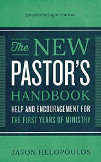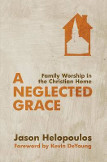
What Would Jesus Drink?
If you were hoping to read a post about the temperance movement, wineries, micro-brews or an illegitimate use of the Bible to fuel the health food revolution (or perhaps I should have said, “health food religion”) then you could very well be disappointed. If, however, you are looking for an explanation about what the Scriptures tell us that Jesus drank when He spoke of "this cup" (Matt. 26:39) then my hope is that you'll find this to be one of the richest subjects for the well being of your soul. So how are we to know what Jesus meant when He spoke of "the cup" that He had to drink? When he entered the Garden of Gethsemane, He went away by Himself and prayed to His Father, “If it is possible, let this cup pass from Me” (Matt. 26:39). As He left the Garden to head to the cross our Lord said to His disciples, “Shall I not drink the cup that My Father has given me" (John 18:11)? Simply put, "the cup" was nothing less than the full outpouring of the wrath of God against the sin of His people. We understand this both from what the Old Testament prophets foretold about that cup, and from the impact that it had on the soul of our Lord when He made mention of it.
The Cup in the Old Testament
There are several place in the Old Testament that help us answer the question, “What would Jesus drink?” The cup that Jesus stared into in the Garden is described in the Old Testament as the cup of judgment and wrath in the following places:
- Psalm 75:7-8: “But it is God who executes judgment, putting down one and lifting up another. For in the hand of the Lord there is a cup with foaming wine, well mixed, and he pours out from it, and all the wicked of the earth shall drain it down to the dregs.
- Isaiah 51:17: “Wake yourself, wake yourself, stand up, O Jerusalem, you who have drunk from the hand of the Lord the cup of his wrath, who have drunk to the dregs the bowl, the cup of staggering.”
- Jeremiah 25:15-17: “Thus the Lord, the God of Israel, said to me: ‘Take from my hand this cup of the wine of wrath, and make all the nations to whom I send you drink it. They shall drink and stagger and be crazed because of the sword that I am sending among them.’ So I took the cup from the Lord's hand, and made all the nations to whom the Lord sent me drink it.”
Most interesting about these three passages is that both Israel and the nations are said to be deserving of the cup of God’s wrath. This parallels Paul’s declaration that both Jew and Gentile are both under sin (Rom. 3:9) and the curse of the Law by nature (Gal. 3:10-13). Jesus’ coming as the substitute Redeemer of His people means that what He did He did in their place and for their good. He drank the cup that we should have drunk. He took up the cup that we should have taken up. He bore our sins in His own body on the tree. He who knew no sin was made sin for us. He was wounded for our transgressions.
The Cup in the Experience of Christ
In the Garden, God the Father gave His sinless Son a foretaste of what He would endure on the cross. The sufferings that He endured were most terrible—not preeminently the physical agonies (as horrific as they were) but the soul-forsakenness He experienced under the wrath of God. So terrible was the foresight of this suffering that our Lord Jesus sweat great drops of blood as He stared into the cup.
Jonathan Edwards explained in vivid detail what a sight of the cup was in the soul of Jesus. He wrote:
Some have inquired, what was the occasion of that distress and agony, and many speculations there have been about it, but the account which the Scripture itself gives us is sufficiently full in this matter, and does not leave room for speculation or doubt. The thing that Christ's mind was so full of at that time was, without doubt, the same with that which his mouth was so full of: it was the dread which his feeble human nature had of that dreadful cup, which was vastly more terrible than Nebuchadnezzar's fiery furnace. He had then a near view of that furnace of wrath, into which he was to be cast; he was brought to the mouth of the furnace that he might look into it, and stand and view its raging flames, and see the glowings of its heat, that he might know where he was going and what he was about to suffer. This was the thing that filled his soul with sorrow and darkness, this terrible sight as it were overwhelmed him.1
Another Cup?
One of the most amazing contextual connections in Scripture is that which has to do with the relationship between the cup that Jesus shuttered back from in soul-dismay in the Garden and the cup that He had given His disciples in the upper room immediately before He entered the Garden. As they ate the first (and last) Supper together, He took the cup and said, “This cup is the New Covenant in My blood shed for many” (Mark 14:24; Luke 22:20). That cup symbolized all of the covenantal redemptive blessings that we have in Christ. It was, in the words of the Apostle Paul, “the cup of blessing which we bless” (1 Cor. 10:16). Moving from the holding forth of the cup of blessing to His disciples, we then find our Lord taking up the cup of cursing in the Garden. Since he finished the work of redemption, the cup of blessing for us is precisely what it is because it was a cup of cursing for Him. Eric Alexander sums this up so well when he writes:
There was a cup in the upper room in Jerusalem that Paul delighted to call “the cup of blessing which we bless” (1 Cor. 10:16). This is the cup the psalmist alluded to when he wrote, “What shall I render unto the Lord for all His benefits toward me? I will take the cup of salvation” (Ps. 116:13). Jesus was offering them this cup when He said, “Take, drink from it” (Matt. 26:27).
But there is another cup in these verses—a cup in Gethsemane that Jesus calls “this cup.” He said, “Father, if this cup cannot pass away from Me unless I drink it, Your will be done” (Matt. 26:42). If the cup in the upper room was the cup of blessing—the cup of salvation that they were to drink—then the cup Jesus looked upon there in the garden, which would make the other cup possible, was the cup of bitterness and sorrow that He must drink.
Only when we come to understand something of the bitterness of the cup He drank do we discover the depths of the cup of salvation from which we need to drink day by day. The experience of our Lord in Gethsemane was a foretaste of the cross, for the appalling spectacle of the sin of man was set before Him in this cup. The contents of this cup were the ingredients of His suffering and agony on the cross.2
With the hymn-writer, we can now say:
Death and the curse were in our cup,
O Christ, ’twas full for Thee!
But Thou hast drained the last dark drop—
’Tis empty now for me.
That bitter cup—love drank it up;
Now blessings’ draught for me.3
We must return again and again to this precious fountain of redeeming truth. The Savior has drunk, to the full, the cup of God's wrath so that we might drink, to the full, the cup of His blessings. We must learn to again and again remember what it is that we deserve from the hand of God and what our Savior took upon Himself for our salvation. It is only as we do so that we are drawn into deeper communion with Him. As R.A. Finlayson put it so helpfully: “As I look upon Him whom I pierced…sin becomes personal and the Savior becomes as personal as sin, and you and He meet together, because you are the sinner that He came to save.” 4
1. Excerpt from Jonathan Edwards' sermon, "Christ's Agony."
2. Except from Eric Alexander's 1963 Keswick Convention talk, "The Cup of Bitterness and the Cup of Blessing."
3. "O Christ What Burdens Bowed Thy Head"
4. R. A. Finlayson
Further Resources
Hugh Martin The Shadow of Calvary
Sinclair Ferguson "The Darkest Night"



















 © Alliance of Confessing Evangelicals
© Alliance of Confessing Evangelicals


